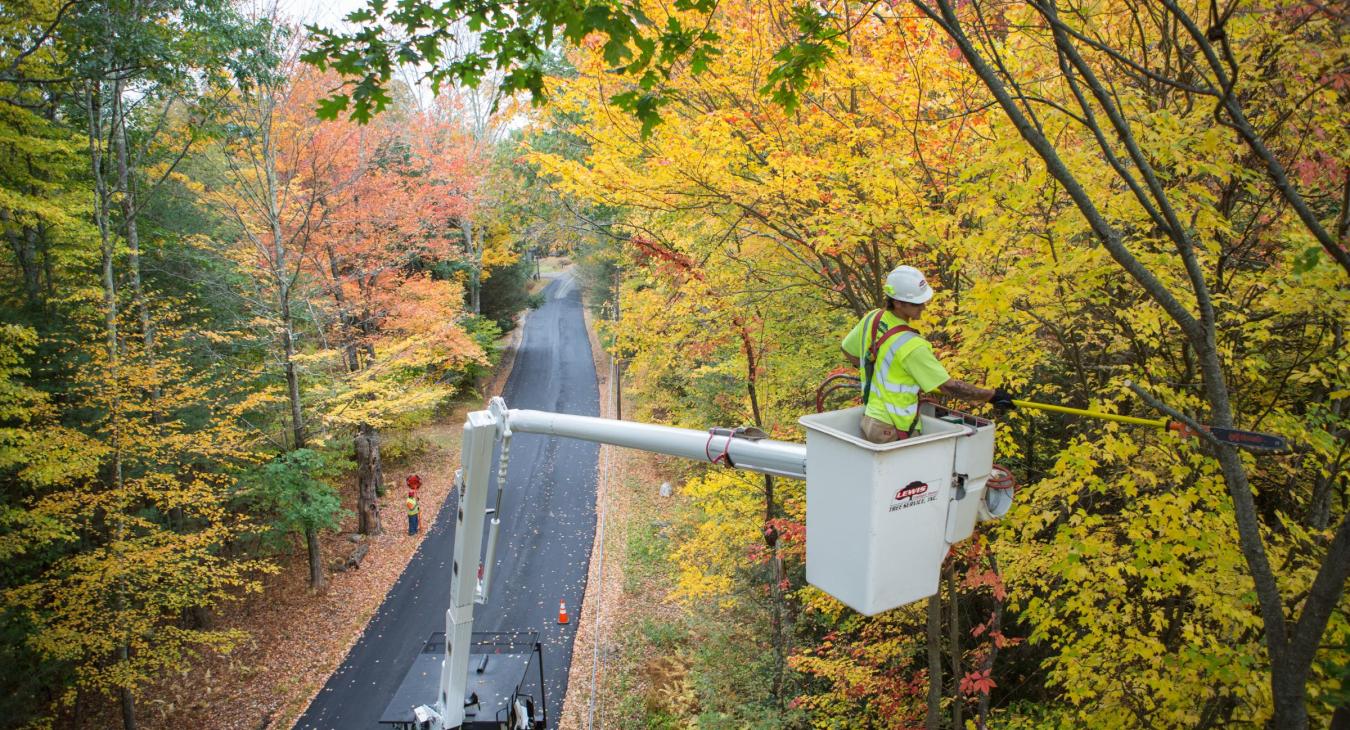By Scott Flood
“Why can’t they just leave my trees alone?”
If you’ve ever wondered that as you’ve watched a tree-trimming crew change the look of your favorite tree, you’ll find the reason in rural Ohio. At a little after 4 p.m. on the steamy Thursday afternoon of August 14, 2003––with everyone’s air conditioners cranked up to MAX––a sagging transmission power line in the Buckeye State came in contact with nearby tree branches. In minutes, 45 million Americans and 10 million Canadians had no air conditioning or any kind of electric power.
Transmission lines are a critical element of the U.S. power grid. These lines crisscross North America, some held up by slim poles, while others hang below towers resembling science-fiction robots. The giant wires suspended from both types can carry enough electricity to power more than a million homes, moving it from distant power plants to public power districts and electric cooperatives.
Federal regulators blamed the 2003 blackout on technology that failed to reroute power properly after the transmission line touched the trees. But they also recognized the problem would not have happened if those trees had been a safe distance away from the line. The outage event led to strict rules your public power district and other electric utilities are required to follow to prevent large-scale blackouts.
Public power districts and electric cooperatives are required to document that every piece of equipment and every foot of our power lines are a safe distance from trees and other vegetation. If your home received a visit from one of our tree-trimming crews, it was likely because your trees were closer to power lines than the rules allow, and we are legally required to act.
You have every reason to be proud of your home and yard, and the last thing we want to do is find ourselves altering or removing a prized part of your landscaping. We’d rather help you avoid conflict between electricity and greenery altogether. How? By reminding you to plant your new trees, shrubs, or other vegetation where they won’t grow into power lines or other electric equipment.
Whether you want to plant a tree, a decorative shrub, or something else, it’s helpful to consider how it’s going to grow over the next 20 or 30 years. Consider both the eventual height and how wide the canopy of branches is likely to spread.
For example, even small trees and shrubs should be planted at least 20 feet from power lines. If you can’t plant that far away, make sure you choose a species that won’t top out at more than 15 feet high. Trees that will be 40 feet high or less should be at least 25 feet from electricity, and larger trees should be at least 50 feet away.
Thinking about what’s above the ground is only part of tree planting safety. Before you grab a shovel and start digging, contact 8-1-1 to ensure you won’t accidentally cut into underground utility lines. The service will send people to your property to mark the approximate locations of utility lines. Because it can be challenging to pinpoint exact locations, use only hand tools when digging within a couple of feet of the markings.
Trees aren’t the only type of vegetation requiring thoughtful planting. If there’s a pad-mounted transformer in your yard, you might be tempted to hide it behind colorful flowers and neatly trimmed shrubs. Unfortunately, if there’s a problem, crews will need clear access to the transformer. That’s why it’s always a good idea to keep plantings at least 10 feet from the transformer’s doors and at least 4 feet from its sides. Otherwise, crews responding to a power problem may need to remove part of your landscaping.
Finally, if you notice your trees or other vegetation have grown dangerously close to power lines or equipment, don’t reach for your chainsaw and try to trim them on your own. Let your local electric utility know or hire a professional arborist. Tree trimming is more dangerous than most people realize, and you don’t want to find yourself in the emergency room––or be the person who plunges your neighbors into the dark!

